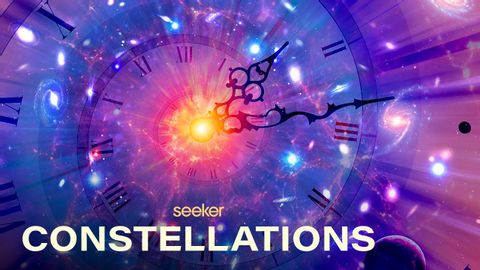從日晷到原子鐘。宇宙是如何塑造我們對時間的理解的? (From Sundials to Atomic Clocks: How the Universe Shapes Our Understanding of Time)
Summer 發佈於 2021 年 04 月 02 日  沒有此條件下的單字
沒有此條件下的單字- v.t./i.出現;估計;我認為〜;認為
- n.身影;(計算過的)數量;肖像;圖;形狀;人物;名人;人影;數字
US /dɪˈtɚmɪn/
・
UK /dɪ'tɜ:mɪn/
US /ˈenʃənt/
・
UK /'eɪnʃənt/
US /ˈstrʌk.tʃɚ/
・
UK /ˈstrʌk.tʃə/
- n. (c./u.)結構;建築物
- v.t.構成;組織
